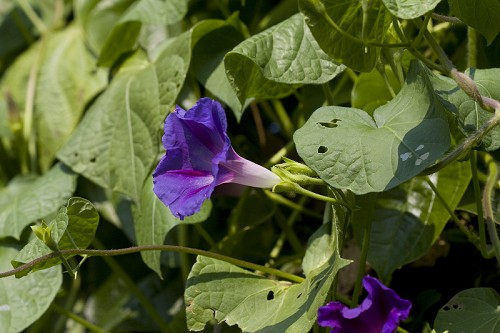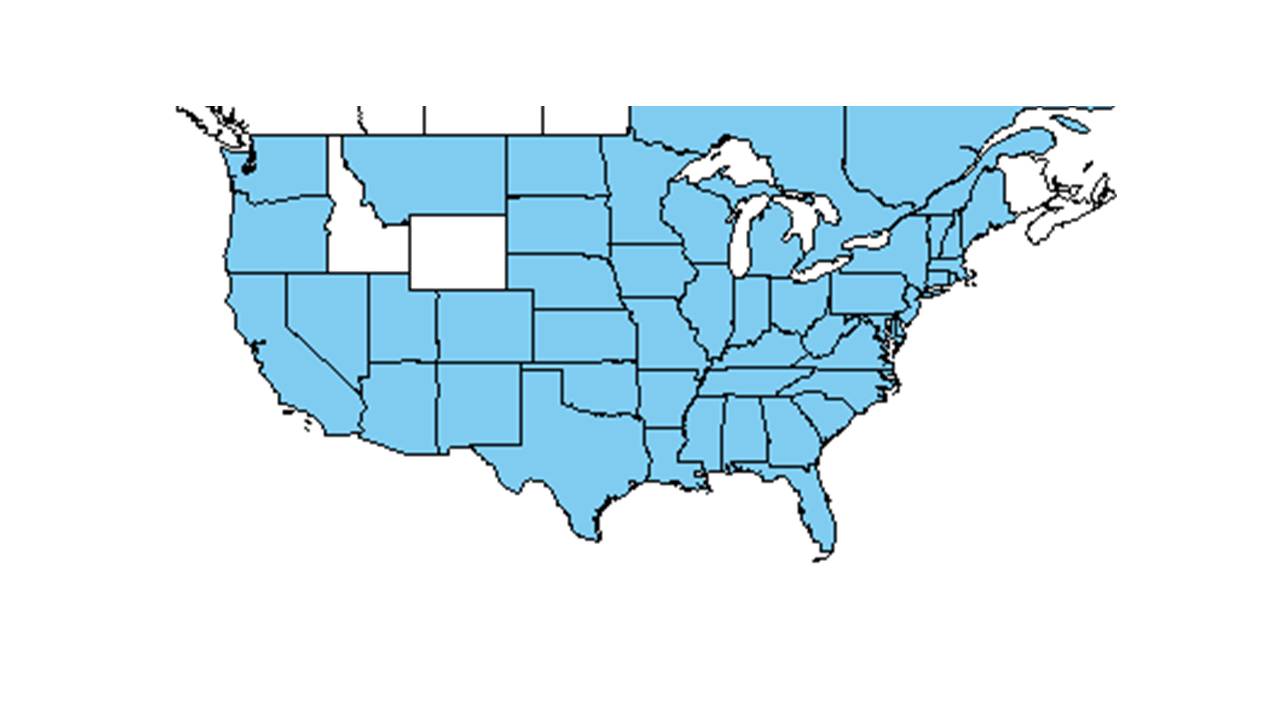Ipomoea purpurea
| Ipomoea purpurea | |
|---|---|

| |
| Photo by John R. Gwaltney, Southeastern Flora.com | |
| Scientific classification | |
| Kingdom: | Plantae |
| Division: | Magnoliophyta - Flowering plants |
| Class: | Magnoliopsida – Dicotyledons |
| Order: | Solanales |
| Family: | Convolvulaceae |
| Genus: | Ipomoea |
| Species: | I. purpurea |
| Binomial name | |
| Ipomoea purpurea (L.) Roth | |

| |
| Natural range of Ipomoea purpurea from USDA NRCS Plants Database. | |
Common names: Tall morning-glory, Common morning-glory.[1]
Contents
Taxonomic notes
Synonyms: Pharbitis purpurea (Linnaeus) Voigt.[1]
Varieties: none.[1]
Description
This plant is a vine and is common within its range.[2]
Distribution
I. purpurea is a native of tropical America.[1]
Ecology
Habitat
This species has been found in disturbed habitats along the edges of soybean fields, on farms, and along roadsides in loamy clay.[2]
Phenology
This species has been observed to flower with a deep magenta-red with a white throat in July, June, and October.[3][2]
Conservation, cultivation, and restoration
Cultural use
When chewed the seeds are a hallucinogen, but this is incredibly dangerous to practice. The rest of the plant has been used as a strong laxative.[4]
Photo Gallery
Ipomoea purpurea flower Photo by John R. Gwaltney, Southeastern Flora.com
References and notes
- ↑ 1.0 1.1 1.2 1.3 Weakley, A.S. 2015. Flora of the southern and mid-atlantic states. Working Draft of 21 May 2015. University of North Carolina at Chapel Hill, Chapel Hill, North Carolina.
- ↑ 2.0 2.1 2.2 Florida State University Robert K. Godfrey Herbarium database. URL: http://herbarium.bio.fsu.edu. Last accessed: June 2014. Collectors: Robert K. Godfrey, Leon Neel, Edwin L. Tyson, Loran C. Anderson, T. MacClendon, and Karen MacClendon. States and Counties: Florida: Calhoun, Jackson, and Leon. Countries: Panama.
- ↑ Nelson, G. PanFlora: Plant data for the eastern United States with emphasis on the Southeastern Coastal Plains, Florida, and the Florida Panhandle. www.gilnelson.com/PanFlora/ Accessed: 12 DEC 2016
- ↑ Korchmal, Arnold & Connie. 1973. A Guide to the Medicinal Plants of the United States. The New York Times Book Company, New York.
